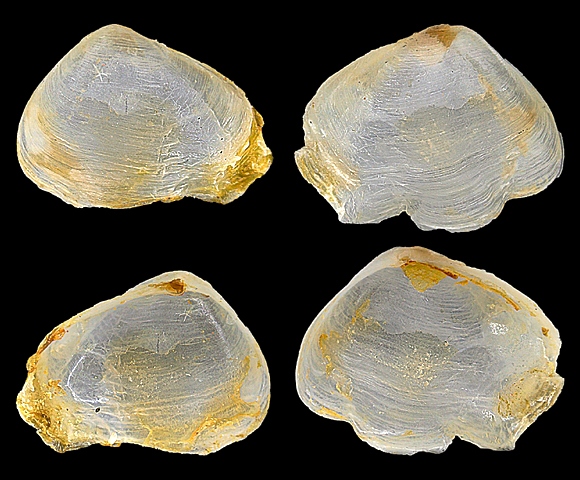
200m deep, off Buggerru, SW. Sardinia. 7mm.
Original pictures provided by A. Nappo (IT).
– (CC BY-NC-SA) –
« Posterior area defined by an angular ridge running from the umbo to the posterior ventral junction. » (MBSBI). Sculpture made up of irregular commarginals; no radials.
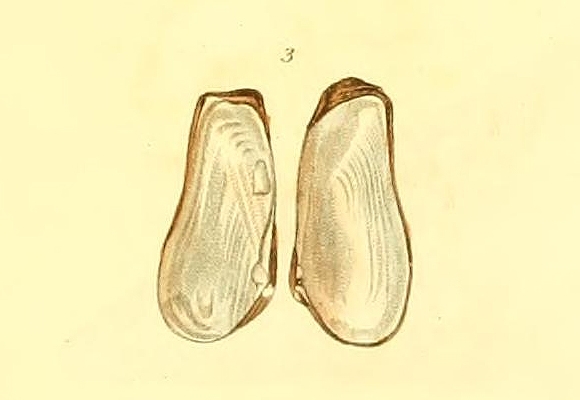
« Shell […] covered with a brown wrinkled skin which extends beyond the anterior end, wedge-form, truncate at the hinge, with the upper margin often a little contracted about the middle, gradually tapering to the anterior end which is slightly open; beaks rather prominent, with the points not quite opposite but divaricating from each other; inside glossy white with a purplish tint, the margin sharp and plain; the elevated tooth running in a gradually narrower and wedge-shaped manner nearly half way along the back margin. » – Op. cit. p.37.
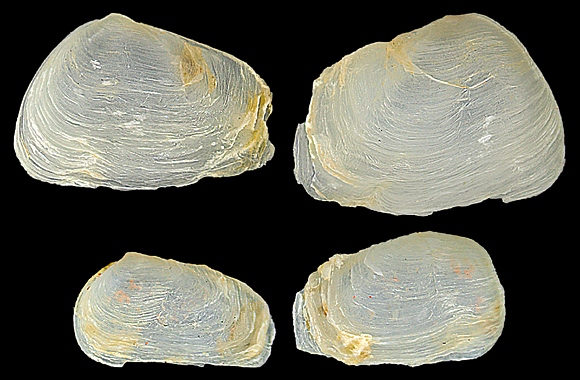
Shape variation in specimens from Buggerru. 5,4-6,9mm.
Original pictures provided by A. Nappo (IT).
– (CC BY-NC-SA) –
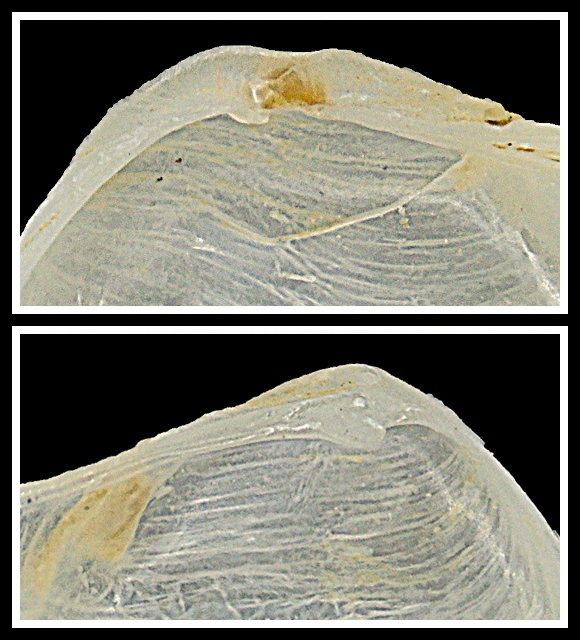
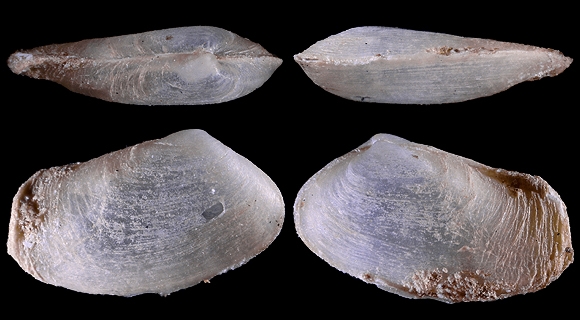
« This is white in colour and typically almost twice as long as broad, seldom much exceeding 1 cm in length. […] The hinge is situated about one-third of the distance from the anterior end and possesses the chondrophores characteristic of the Myidae with the associated condensed internal ligament. The assymmetry of the hinge mechanism is responsibe, as in all Myidae, for the shell being inequivalve, the right valve being the larger… » – C. M. Yonge: “Observations on Sphenia binghami Turton”, Journal of the Marine Biological Association of the United Kingdom vol. 30(2), Cambridge 1951, p.389.